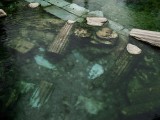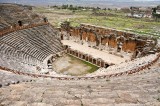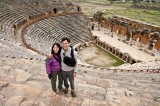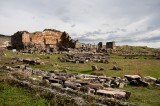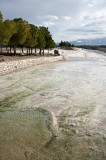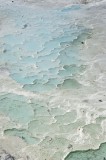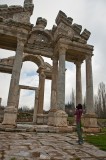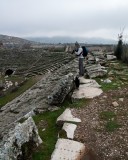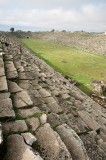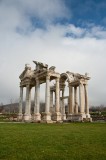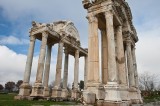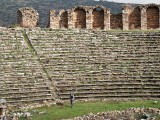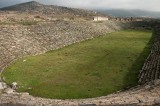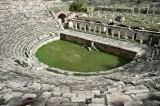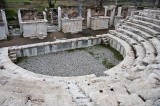
Pamukkale and Aphrodisias
We flew to Denizli from Istanbul and then took a cab to Pamukkale to see both Hierapolis, which was founded as a thermal spa in the 2nd century BC, and also the travertines. The travertines are formed from the calcium carbonate deposited by the hot springs that the thermal spas of Hierapolis were built to contain. It again rained heavily while we were out in Hierapolis, but the weather started to turn in the afternoon and by the time we started walking in the warm water flowing over the travertines, the sun came out for the first time in a week. This change in weather proved to be the start of a spell of good weather we enjoyed over the next few days. We had fun wading in the warm water flowing over the travertines, and also admired the patterns of the calcium deposits on the travertines. Within 30 minutes, however, the sun went back behind the clouds and the rain started again.
The next day, we hired a cab to bring us to Aphrodisias, which is named after Aphrodite, the Greek goddess of love. One benefit of visiting in the off-season is that we can occasionally get wonderful places like Aphrodisias almost completely to yourself. One disadvantage is that we had to pay for costly cabs to get to these sites because the regular tourist buses don't operate in the winter. We only encountered one tour group the entire time we spent in Aphrodisias, and they only spent an hour or so around the site. We enjoyed walking around the site and reading the signs, particularly the impressive stadium that had a seating capacity of 30,000 and a length of 270 meters.
